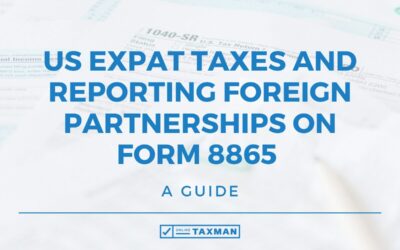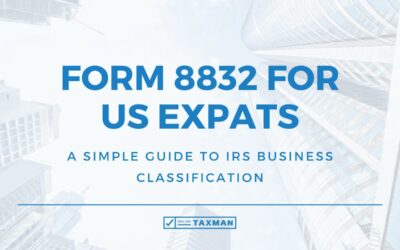Living abroad is an increasingly attractive option for US Americans as it offers many lifestyle benefits. In addition, qualifying as a bona fide resident in a foreign country or countries has a major tax benefit, the Foreign Earned Income Exclusion (FEIE). The FEIE allows expats to exclude a significant amount of earned income from US taxation.
To qualify, you must pass either the Bona Fide Residence Test or the Physical Presence Test. In 2025, the FEIE allows eligible US expats to exclude up to $130,000 of income from their US tax return.
In this article, we explain what bona fide residency means, who qualifies as bona fide resident of a foreign country, and how it can save expats on US income tax. We also cover how to claim this tax benefit and an alternative way to qualify, the Physical Presence Test.
We cover:
If you are new to expat taxes and need help with your US tax return, you can schedule a consultation with us.
Bona Fide Resident Status To Qualify For The Foreign Earned Income Exclusion
A major US tax benefit for Americans who are bona fide residents in a foreign country is the Foreign Earned Income Exclusion (FEIE). It allows the taxpayer to exclude up to $130,000 (2025) of income they earn while living abroad from US income tax.
However, to claim this exclusion you must qualify through one of two tests: the Bona Fide Residence Test or the Physical Presence Test.
We will focus first on the Bona Fide Residence Test, and then compare it with the Physical Presence Test.
How To Pass The Bona Fide Residence Test
The IRS does not provide a clear-cut definition of Bona Fide Residency. Unlike the Physical Presence Test, which is based on counting days, the Bona Fide Residence Test is more subjective. The IRS evaluates your facts and circumstances, making it harder to prove but more flexible once established.
In short, you pass the Bona Fide Residence Test if you are a US taxpayer and meet all the following:
- Establish your home overseas,
- Live there for more than one entire calendar year, and
- Have no immediate intention of returning to live in the US permanently.
Let’s look at each point separately and how to meet the Bona Fide Residence Test (BFR) requirements.
How To Establish Your Home Overseas For Bona Fide Residency
One of the most important parts of claiming your bona fide residency is being able to prove that your tax home and residence has shifted from the US to a foreign country.
Your legal (immigration) and your tax status matter, as well as your local ties and your intention to stay in your new country.
You should have documentation that can prove your resident status. This can include:
- Long term visa or passport of your resident country
- Local tax filings
- Local health insurance
- Long-term lease or purchased home
- Utilities and other bills
- Membership in a local gym or associations
- Local bank accounts
- Resident ID card
- Family or spouse from the country.
The IRS does not provide a definitive list of required documentation. This makes the Bona Fide Residence Test more subjective than the Physical Presence Test.
At Least One Full Calendar Year In Your Resident Country
To meet the Bona Fide Residence Test, you must be a resident of a foreign country or countries for an entire calendar year. This means an uninterrupted period from January 1st to December 31st.
For example, if you moved to Spain on June 1, 2024, you would not qualify under the Bona Fide Residence Test until you have lived abroad for the full 2025 calendar year.
During that time, you can leave for brief vacation or business trips, even back to the US. But you must have the clear intention to return to your resident country, or directly to a new foreign country of residence, without unreasonable delay.
After completing one full calendar year, you qualify as bona fide resident. You can apply this status from the date you began your residency until the date you abandon your foreign residence.
This means you can also qualify as a bona fide resident for parts of one or two other tax years, in addition to the full tax year(s) of Bona Fide Residency (BFR).
Typically, it is easier to use the Physical Presence Test (PPT) in the year of the move. You would only use a part-year BFR when you do not qualify for PPT, and you are sure you will pass BFR the following year by being the full following year abroad.
Determining an expat’s intention to return to the United States is not always straightforward. For example, expats on a long-term assignment or local contract could qualify if they meet the other requirements above.
On the other hand, if you are on a 2-year expat assignment from your company with a pre-determined return date, you won’t qualify. In that case, you would have to use the Physical Presence Test to qualify for the FEIE.
To show your intentions, in case of an audit or pushback by the IRS, documented strong ties in your resident country, as listed above, are very helpful. Furthermore, it is important not to have strong ties to the US anymore.
Bona Fide Residence Test Vs Physical Presence Test – Which Is Better?
You can qualify for the Foreign Earned Income Exclusion (FEIE) and Foreign Housing Exclusion/Deduction under either Bona Fide Residence (BFR) or Physical Presence Test (PPT).
The main difference between the Bona Fide Residence Test and the Physical Presence Test is that one is more qualitative and the other more quantitative. Both can have advantages and drawbacks.
Many expats prefer the Physical Presence Test because the requirements are clearly defined. Under this test, you must spend at least 330 full days in a 12-month period in foreign countries.
Please note that this does not directly translate to “less than 35 days in the US”. The IRS provides strict definitions for each part of the requirement, i.e., what is a full day and a foreign country. Learn about the details in our guide to the Physical Presence Test.
The Bona Fide Residency Test on the other hand is more subjective, as the IRS does not provide a clear definition. It is not about strictly counting days. You could go back to the US for more than 35 days for family, social or work reasons. However, BFR can be more difficult to prove.
Many expats find it easier to qualify under the Physical Presence Test in their first year abroad. Once they complete a full calendar year overseas, they often switch to the Bona Fide Residence Test in future years for greater flexibility.
No matter which test you use to qualify for the Foreign Earned Income Exclusion, you must file IRS Form 2555 together with your tax return.
Bona Fide Residence Test: Your Key Questions Answered
How long do I need to live abroad to qualify under the Bona Fide Residence Test?
You must live in a foreign country for a full calendar year (January 1 – December 31) without interruption. Short trips to the US are allowed if you clearly intend to return to your foreign residence.
Can I switch between the Bona Fide Residence Test and the Physical Presence Test?
Yes. Many expats use the Physical Presence Test in their first year abroad, then switch to the Bona Fide Residence Test once they have completed a full calendar year overseas.
Does the Bona Fide Residence Test work for digital nomads?
It depends. If you move between countries but establish residency and legal status in one place, you may qualify. Constant short stays without clear residency usually don’t meet the test.
What happens if I return to the US before completing a full year abroad?
You won’t qualify under the Bona Fide Residence Test for that year. Instead, you may still qualify using the Physical Presence Test if you meet the 330-day rule.
Do I need to be a legal resident of the foreign country to pass the test?
Not always, but having legal residency status (such as a long-term visa, work permit, or permanent residency) strongly supports your case. Without it, you may still qualify if you can show clear intent to live abroad through housing, taxes, and other local ties, but it is harder to prove.
Advantages Of The Bona Fide Residence Test Vs Physical Presence
Qualifying for the FEIE with the Bona Fide Residence Test, rather than the Physical Presence Test, gives an expat more flexibility with spending time in the US.
You can return to the US during the year without worrying about counting days like for the PPT. However, you should generally not spend more than 3 months in the States when claiming bona fide residency.
But be aware that any work performed in the US is taxable there. You cannot exclude it with the Foreign Earned Income Exclusion. The FEIE is calculated on a pro-rata basis for the days worked in a foreign country or countries.
Are you unsure, which test to use or need help filing your expat tax return? Schedule a consultation with us.








